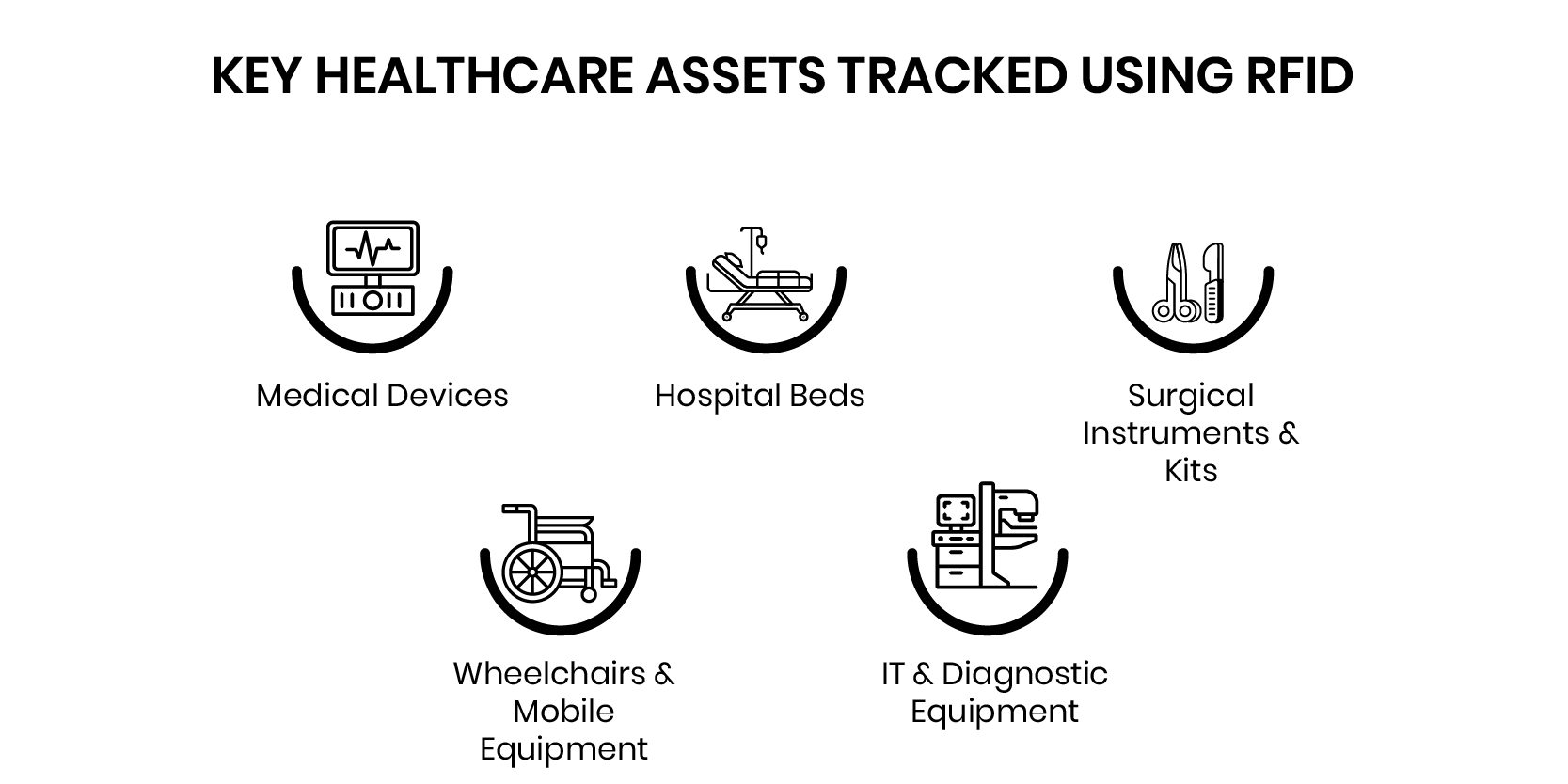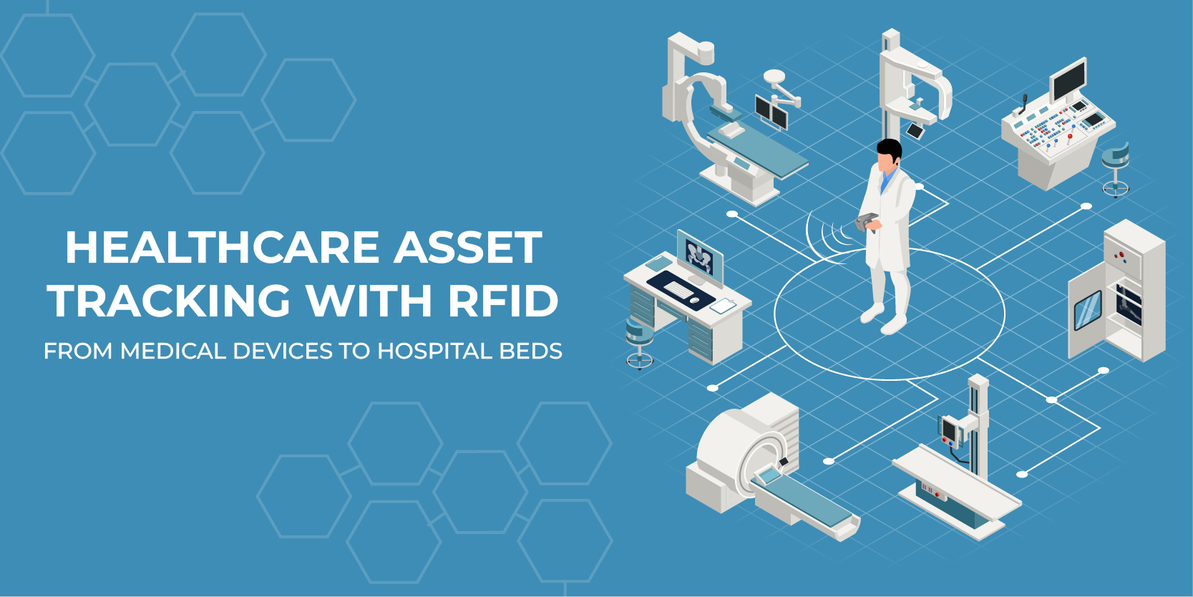Healthcare Asset Tracking with RFID: From Medical Devices to Hospital Beds
Introduction
In the healthcare industry, managing and locating critical assets like medical equipment, hospital beds, and surgical instruments is a daily challenge. With thousands of items constantly moving across departments—often in high-pressure environments—manual tracking systems quickly become inefficient, error-prone, and costly.
![]()
Real-time visibility of assets is not just about operational efficiency; it's about saving lives. If a life-saving device, such as a defibrillator or ventilator, isn’t available when needed, it can severely impact patient care. This is where RFID (Radio Frequency Identification) emerges as a transformative technology for healthcare.
RFID offers a smarter, faster, and more accurate way to monitor, manage, and maintain healthcare assets, ensuring the right equipment is in the right place at the right time.
What is RFID in Healthcare?
RFID is a wireless communication technology that uses radio waves to identify and track objects. In healthcare, RFID can be applied to a wide variety of assets by attaching RFID tags to them and using readers and antennas to detect and track their location and movement.
Core components include:
- RFID Tags – Small devices attached to assets that store data.
- RFID Readers – Devices that detect and read information from tags.
- Antennas – Boost the signal and facilitate communication between tags and readers.
- RFID Software – Like TagMatiks AT, which aggregates data and provides actionable insights.
Unlike traditional barcode systems that require line-of-sight and manual scanning, RFID systems can automatically scan multiple items simultaneously, even if they are not visible, saving time and reducing errors.
Key Healthcare Assets Tracked Using RFID

Medical Devices
Equipment such as infusion pumps, ventilators, and defibrillators are often moved between departments. With RFID, staff can instantly locate these devices, reducing time spent searching and ensuring availability during emergencies.
Hospital Beds
Beds equipped with RFID tags can be tracked in real-time, providing updates on their location, occupancy status, and maintenance needs. This improves patient flow and ensures compliance with cleaning protocols.
Surgical Instruments & Kits
Surgical tools require strict sterilization and tracking. RFID enables real-time monitoring of sterilization cycles and prevents instruments from being misplaced or left behind during procedures.
Wheelchairs and Mobile Equipment
Wheelchairs, IV stands, and portable machines frequently go missing or are hoarded in certain departments. RFID helps track their movement and usage, ensuring better allocation and availability.
IT & Diagnostic Equipment
High-value items like imaging systems, portable monitors, and computing devices are prone to loss or theft. RFID enhances audit trails and helps enforce security protocols while making compliance reporting easier.
Benefits of RFID for Healthcare Asset Tracking
![]()
Improved Asset Utilization
RFID provides real-time visibility into asset usage, helping hospitals identify underused or idle equipment. This allows for better allocation across departments, eliminates bottlenecks, and prevents the need for redundant purchases or overstocking of expensive medical devices.
Enhanced Patient Safety
By ensuring the timely availability and proper maintenance of life-saving equipment, RFID reduces delays in diagnosis and treatment. Reliable asset tracking minimizes errors, streamlines emergency response, and helps healthcare providers deliver faster, safer, and more effective patient care.
Automated Maintenance and Compliance
RFID systems automatically log maintenance activities, service dates, and calibration requirements for medical assets. This ensures compliance with healthcare regulations and accreditation standards while reducing the burden of manual documentation and lowering the risk of equipment-related failures.
Reduced Capital Expenditure
Hospitals can make data-driven decisions about equipment needs by tracking real-time asset availability and movement. This prevents unnecessary purchases and optimizes the use of existing resources, ultimately leading to significant cost savings and more efficient budget planning.
Real-World Applications & Use Cases
Emergency Rooms: In fast-paced emergency rooms, RFID enables real-time tracking of essential equipment like crash carts, defibrillators, and portable monitors. This ensures that medical staff can quickly locate critical devices during emergencies, drastically reducing response times and improving patient outcomes when every second counts.
Operating Rooms & ICUs: RFID plays a crucial role in monitoring surgical tools, anesthesia machines, ventilators, and other high-value equipment in operating rooms and intensive care units. It ensures these items are properly sterilized, maintained, and readily available when needed—supporting strict hygiene protocols and minimizing the risk of procedural delays or equipment failure.
Maintenance Logs: RFID automates the tracking of maintenance, calibration, and inspection schedules by recording each activity directly in the system. This eliminates manual logging errors, provides a digital audit trail, and ensures that all medical equipment remains compliant with safety standards and ready for use at all times.
Choosing the Right RFID Tags for Healthcare
On-Metal RFID Tags
For metal-based equipment like infusion machines, ECG carts, and other diagnostic or treatment devices, standard RFID tags often face signal interference. In such cases, TagMatiks On Metal tags are engineered to deliver consistent and accurate reads, even when affixed directly to metallic surfaces. These tags ensure reliable performance and durability in high-demand hospital environments, such as intensive care units and emergency departments.
In cases where heavy-duty or mobile equipment like sterile linen trolleys & bins needs tracking, hospitals may also complement their asset strategy with rugged solutions like the TagMatiks Gorilla Tag, designed to withstand impacts, moisture, and rough handling.
Washable/Wearable Tags
Healthcare garments, scrubs, and linens require RFID tags that can withstand repeated industrial laundering. The TagMatiks Stitch RFID Laundry Tag offers a flexible, washable solution ideal for tracking items through washing, drying, and distribution cycles—ensuring proper inventory management without compromising tag longevity or performance.
Selecting the appropriate RFID tag type, based on the equipment material, usage environment, and operational needs, is essential to achieving optimal results. Using the right tags from the TagMatiks Asset Tracking suite ensures accurate identification, streamlined workflow, and reliable performance in the challenging and fast-paced world of RFID in healthcare.
How RFID Asset Tracking Works in Healthcare
RFID asset tracking in healthcare operates by attaching RFID tags to medical equipment, beds, garments, or tools. These tags communicate wirelessly with readers placed throughout the facility, capturing real-time data on asset location, usage, and movement.
This system eliminates manual tracking and reduces human error, offering improved visibility into asset availability and maintenance needs. With solutions like TagMatiks Asset Tracking, hospitals can streamline operations, automate compliance logs, and enhance overall efficiency.
The use of RFID in healthcare enables staff to locate critical assets faster, reduce equipment loss, and improve patient care. Whether it's tracking high-value devices or laundry cycles, RFID asset tracking provides a scalable, accurate, and reliable infrastructure for modern healthcare environments.
Conclusion
RFID technology is revolutionizing asset tracking in healthcare by providing real-time, automated, and accurate data on critical equipment. From improving patient outcomes to reducing operational costs and enhancing compliance, the benefits are substantial.
Hospitals that adopt RFID are not only streamlining operations—they’re setting a new standard for patient-centric care. It’s time to move beyond outdated manual tracking and embrace the smart, scalable power of RFID.
Recent Posts
-
How RFID Anti-Theft Tags Revolutionize the Retail Industry
Introduction Retail theft and inventory shrinkage are challenges that every store owner faces. Wheth …Dec 22nd 2025 -
RFID Portals in Manufacturing: Tracking Work-in-Progress Efficiently
Introduction Manufacturing thrives on precision and timing. Every part, component, and subassembly m …Dec 15th 2025 -
RF Shielding Explained: Types, Applications, and Benefits
Introduction RF shielding is essential for protecting devices from electromagnetic interference. Thi …Dec 8th 2025




